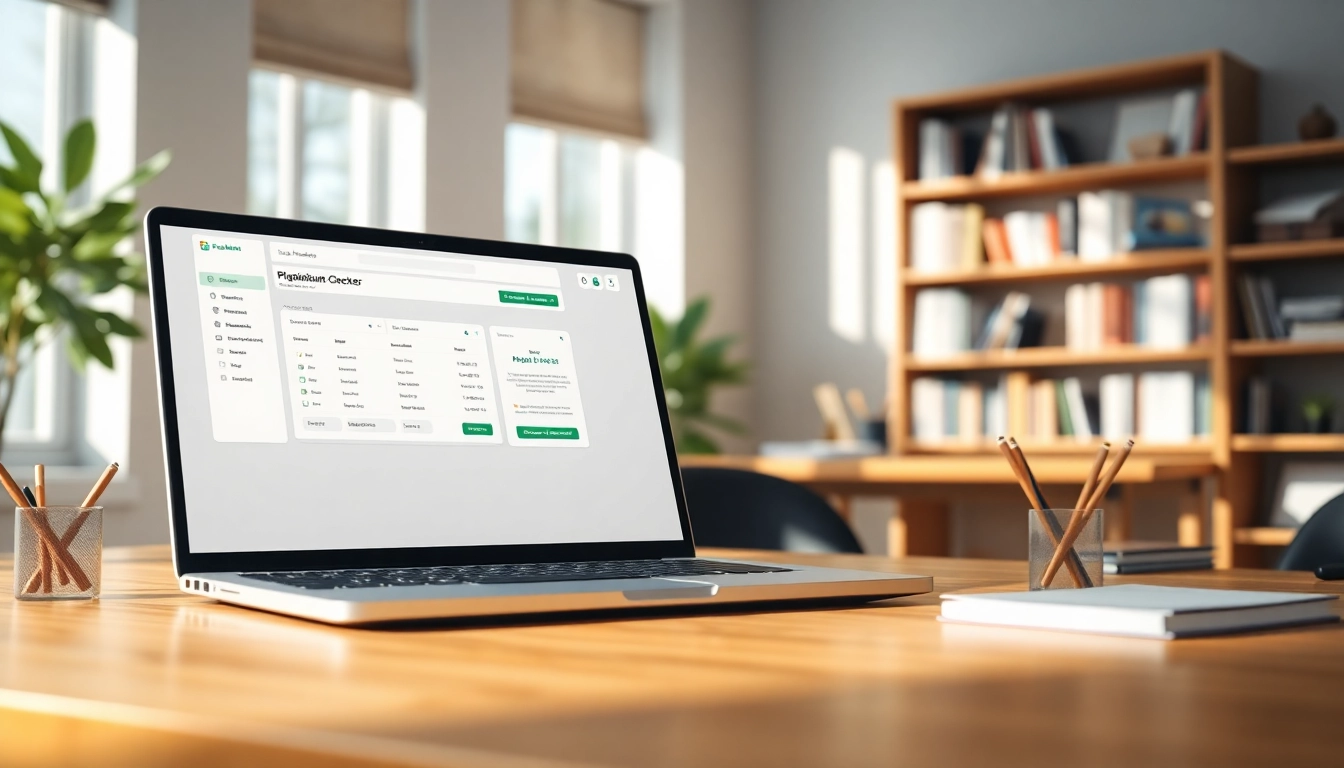Understanding Plagiarism and Its Implications
Plagiarism remains one of the most significant concerns in the academic and professional writing world. It not only undermines the credibility of the writer but also poses severe ethical dilemmas. To fully grasp its implications, let’s delve deeper into what plagiarism is, the potential consequences that follow, and the common types of plagiarism found in various types of writing.
What is Plagiarism?
Plagiarism is defined as the act of using someone else’s work, ideas, or intellectual property without giving them proper credit. This can occur in various forms, including copying text verbatim, paraphrasing without acknowledgment, or even presenting someone else’s work as one’s own. In academic contexts, plagiarism is considered a serious offense that can lead to failures or expulsion, while in professional fields it can result in loss of reputation or legal ramifications.
Potential Consequences of Plagiarism
The consequences of plagiarism can vary widely based on the context and severity of the offense. In academic settings, students caught plagiarizing may face zero grades on assignments, academic probation, or even expulsion. For professionals, plagiarism can damage careers, leading to loss of clients, audiences, or job positions. Legally, plagiarism could lead to copyright infringement lawsuits, costing individuals and organizations not only financially but also in terms of credibility.
Common Types of Plagiarism
Several forms of plagiarism exist, each with unique characteristics:
- Direct Plagiarism: Copying someone’s work word-for-word without citation.
- Self-Plagiarism: Reusing one’s previously published work without citation.
- Patchwork Plagiarism: Mixing various sources together without proper citations.
- Accidental Plagiarism: Unintentionally failing to cite sources or misquoting them.
The Importance of a Plagiarism Checker
Using a plagiarism checker is crucial for maintaining the integrity of written work. These tools not only safeguard authors against accidental plagiarism but also enhance the overall quality and originality of writing. In this section, we’ll explore the various reasons for using a plagiarism checker and the specific benefits it offers to students, educators, and content creators alike.
Why Use a Plagiarism Checker?
Plagiarism checkers serve as a first line of defense against the unintentional use of copyrighted material. They compare submitted text against vast databases to identify similarities with published work. This enables writers to catch potential issues before submitting their materials, thereby facilitating an ethical writing environment.
Benefits for Students and Educators
Students can greatly benefit from utilizing plagiarism checkers. Not only do these tools help identify potential plagiarism, but they also improve writing skills by demonstrating where citations are needed. For educators, providing students access to plagiarism-checking software can foster academic integrity, enhance learning outcomes, and provide an additional teaching resource for citation practices.
Advantages for Content Creators
For those in content creation, be it bloggers, marketers, or corporate communicators, a plagiarism checker ensures that the content produced is original and does not infringe on existing works. This protects against legal issues and maintains a brand’s reputation. Furthermore, frequent use can serve to elevate a writer’s reputation for originality and quality.
How to Choose the Right Plagiarism Checker
With numerous plagiarism checker tools available, selecting the right one can be challenging. Consider the following features and aspects to find the best tool for your needs.
Features to Look For
When evaluating plagiarism checkers, essential features to consider include:
- Database Size: A larger database ensures a more comprehensive check against various sources.
- Detailed Reports: Look for tools that provide in-depth reports, highlighting unoriginal content and suggesting corrections.
- User-Friendly Interface: A straightforward interface can enhance the user experience, making it easier to navigate through results.
- Integration Capabilities: The ability to integrate with word processing software or other platforms can streamline the writing process.
Free vs. Paid Options
Free plagiarism checkers can be a great starting point, but they often come with limitations such as word count restrictions and lesser features. Paid options typically offer more reliability, accuracy, and can handle larger documents. Assess your needs and decide whether the additional features offered by paid services justify the investment.
User Reviews and Credibility
Before committing to a plagiarism checker, it’s wise to research user reviews and ratings. These insights can provide a glimpse into the effectiveness, reliability, and user satisfaction of a tool, aiding in making an informed decision.
Using a Plagiarism Checker Effectively
Utilizing a plagiarism checker requires knowledge of how to conduct checks and interpret the results effectively. This section outlines practical steps to maximize the utility of your chosen tool.
Steps to Conduct a Plagiarism Check
Follow these steps to ensure a thorough plagiarism check:
- Prepare your document by ensuring that it is well-formatted and ready for upload.
- Access the plagiarism checker and upload your document or paste the text directly into the tool.
- Initiate the plagiarism scan and wait for the results.
- Review the report, focusing on highlighted sections where matches were found.
Interpreting the Results
Understanding the results of a plagiarism checker can be complex. Typically, the report will indicate the percentage of content that matches existing works alongside links to those sources. It is crucial to examine what aspects of your text may need citation or rephrasing to ensure originality.
How to Address Detected Plagiarism
If the plagiarism checker reports issues, there are several steps to take:
- Revise the Content: Paraphrase sections or incorporate additional context to distinguish your work from the source material.
- Include Citations: Where necessary, add proper citations to give credit to original authors.
- Consult Writing Resources: Utilize resources on proper citation practices and how to effectively paraphrase.
Maintaining Academic Integrity Beyond the Plagiarism Checker
While using a plagiarism checker is vital, sustaining academic integrity necessitates a broader approach. Here we explore strategies to enhance research practices and referencing techniques.
Developing Good Research Practices
Conducting thorough and diligent research is fundamental to producing original content. Good research practices involve keeping careful notes, organizing sources effectively, and regularly reviewing materials to avoid unintentional plagiarism. Utilizing research management tools can further streamline this process.
Proper Citing and Referencing Techniques
Understanding and applying the appropriate citation style is critical. Familiarize yourself with styles such as APA, MLA, and Chicago, ensuring consistency throughout your work. Proper referencing not only helps to avoid plagiarism but also enhances the credibility of your own contributions.
Tools to Complement Your Plagiarism Checker
Consider integrating additional tools, such as grammar checkers, citation generators, and writing aids, to complement your plagiarism checker. These tools can enhance the overall quality of your writing and provide a more holistic approach to creating original content.



